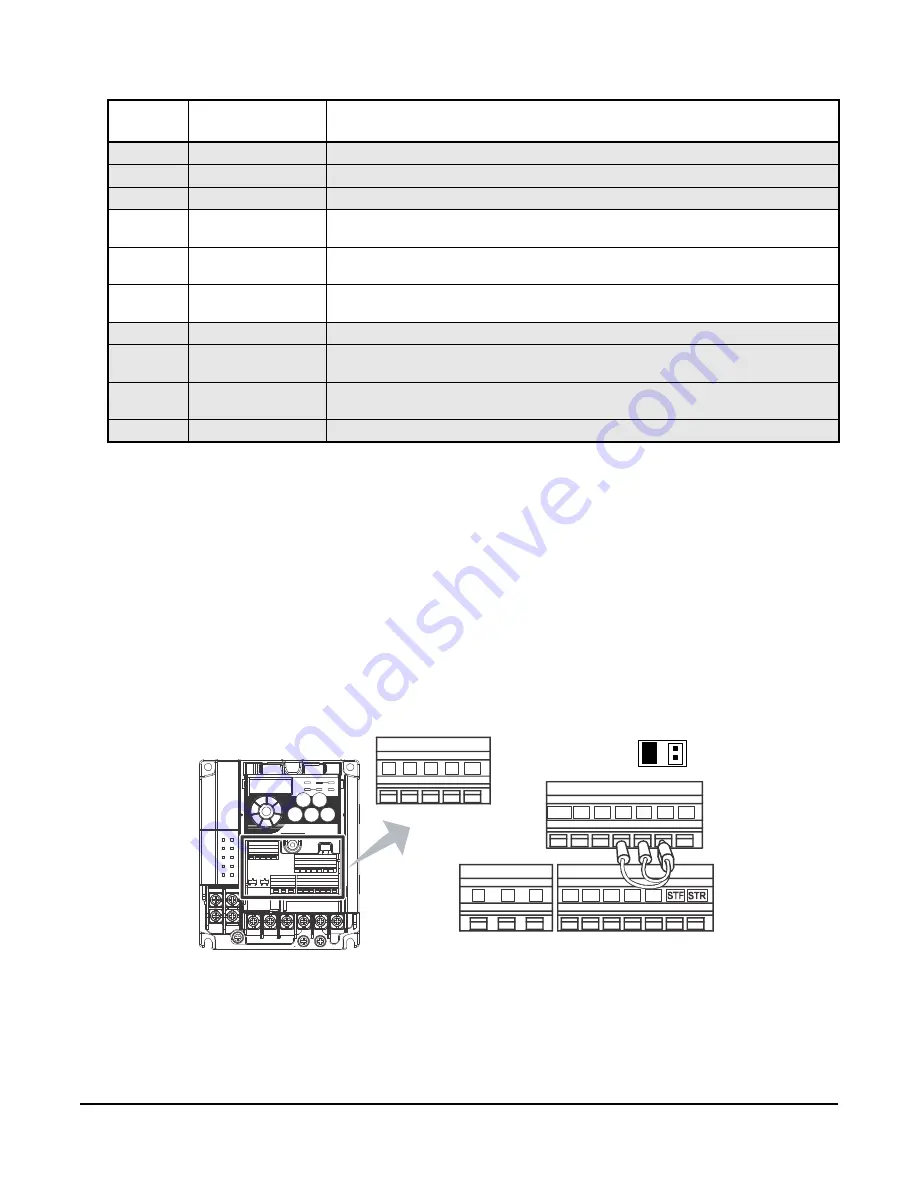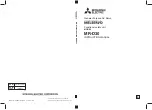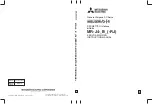
VFD68 Variable Frequency Drives (230 or 460 VAC)
20
To connect the input signal devices:
1.
Loosen the screws on the front cover and remove the cover to access the low voltage wiring (Figure 8 on
page 17).
2.
Locate the low-voltage wiring terminals (Figure 12).
RL
Contact Input
Run Low Speed
RM
Contact Input
Run Medium Speed
RH
Contact Input
Run High Speed
SD
Common
Common for + 24 VDC Supply and contact inputs (when using Sink logic - default
setting)
PC
+24 VDC
Pr 24 VDC excitation voltage, 100 mA maximum, Use for P499A or P499V
transducers.
STF
Contact Input
Forward rotation. Connect STF to SD terminal (common) to enable VFD to rotate
forward.
STR
Contact Input
Reverse rotation (used to reverse motor rotation)
A
Relay Output (N.O.)
During normal operation, relay contacts A and C are open. (maximum alarm load:
230 VAC, 0.3 A or 30 VDC, 0.3 A)
B
Relay Output (N.C.)
During normal operation, relay contacts B and C are connected. (maximum alarm
load: 230 VAC, 0.3 A or 30 VDC, 0.3 A)
C
Relay Output (C)
Relay output common
1.
Gray cells indicate a terminal that is typically not used in condenser fan speed control applications.
Terminal RL (Run Low Speed) corresponds to P. 6; Terminal RM (Run Medium Speed) corresponds to P. 5; Terminal
RH (Run High Speed) corresponds to P. 4. When one of these terminals is connected to SD (common) the VFD runs at
the speed shown in the corresponding parameter.
Terminal STR (reverse rotation) is disabled by P. 78 setting = 1. This terminal is not useful for condenser fan speed
control applications.
Terminals A, B, and C are connected to relay contacts that activate when a fault has occurred and the VFD output has
stopped.
Table 14: VFD68Bxx and VFD68Cxx Drives Low-Voltage Connections Information
1
(Part 2 of 2)
Terminal
Label
Signal Type
Description
Figure 12: Locating the Low
-
Voltage Wiring Terminals
PC
SD
RH
RM
RL
AM
C
B
A
10
2
5
4
RUN SE
S1 S2 SC
SO
SD
F
IG
:cnt
rl
_
cr
ct
_t
rm
nl
_l
yt
SI
N
K
SOURCE
















































